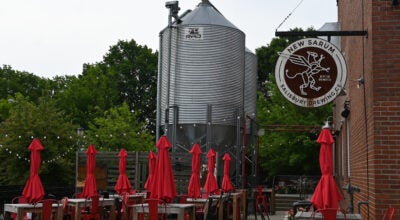New developer revives plan for apartment complex behind Aldi
Published 12:00 am Friday, February 22, 2013
SALISBURY — The developer building a new apartment complex near the Bank of North Carolina has taken over the stalled affordable housing project behind the new Aldi.
Pirhl Southeast is under contract to purchase land behind the grocery store from Charlotte real estate company Childress Klein and build a 72-unit, campus-style apartment complex called Alexander Trace, according to Pirhl Vice President Dustin Mills. The project was originally dubbed Westgate Commons.
Pirhl is already developing Sterling Trace near the Bank of North Carolina on West Jake Alexander Boulevard.
For the project behind Aldi, Pirhl is using the same architect as the previous developer, and Salisbury City Council approved the design and layout last year.
On Thursday, the city’s Technical Review Committee signed off on the site plan, which had a few small changes including additional parking — two spaces per apartment — and a re-orientation of the clubhouse.
The apartments also will have porches rather than enclosed sunrooms. The developer agreed to beef up the buffer between the complex and surrounding neighborhood with additional trees and bushes.
Building the complex hinges on winning competitive federal tax credits awarded by the N.C. Housing Finance Agency. Pirhl won tax credits for Sterling Trace, which will have 80 two- and three-bedroom units for families.
Rent is controlled in tax-credit projects, and tenants must qualify for certain income limits to live in the complexes. Rent is typically no more than 60 percent of median income based on family size.
Income ranges include starting salaries for teachers, police officers and firefighters.
Jud Little was the original developer of Westgate Commons, a $7 million development. When he didn’t win the tax credits, Little said he wanted to find alternate financing to go forward with the complex, but Childress Klein had moved on.
Mills said Thursday he feels the new project — Alexander Trace — has a better chance of winning tax credits, which will be announced in August.
“We are making internal changes that we believe will enhance our competitiveness,” he said.
Changes involve the way the project is financed, Mills said, but he didn’t go into detail. The apartments, clubhouse and amenities are basically the same, he said.
He would not put a value on the project, saying it’s too early in the process. Sterling Trace is a $9.4 million project that won $701,284 in federal housing credits in 2012.
At the time, Mills said Pirhl was committed to doing multiple projects in Salisbury.
“It’s a vibrant market,” Mills said.
Mills and Peter Tatge, planning director for ESP Associates, appeared before the Technical Review Committee.
Salisbury has a significant need for apartments of all types, a recent study showed.
The local market can support 808 new government-subsidized units, 84 new affordable units and 119 new market rate units, according to an analysis completed within the past year for development of mixed income housing.
Salisbury is projected to experience moderate population growth until 2016, with most of the growth in the 55-plus age group, according to Bowen National Research, a real estate market research firm.
The 25-to-54-year-old age group will grow as well, adding to the increased demand for housing.
Most of the city’s existing rental housing is full. Overall, the occupancy rate for rentals is 91 percent, which is a moderate but stable rate for rental housing, the analysis said.
All of the government subsidized units are full, followed by existing tax credit units at 99 percent. The occupancy rate for market-rate units is 88 percent, although market rental housing built within the last five years has higher rates.
Contact reporter Emily Ford at 704-797-4264.





